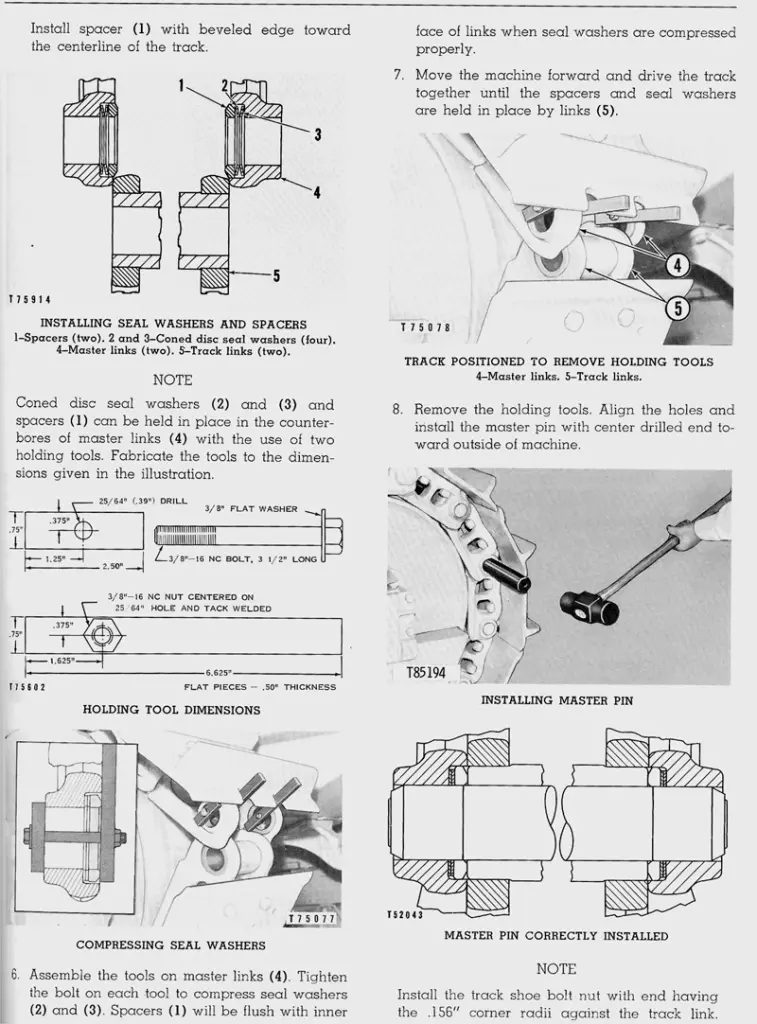If you cut the link with the master bushing, then you have to shorten the regular bushing to make it a master bushing. Not too hard, torch it off and grind it smooth. Or just torch the other link (the one that the master pin was driven through) I expect the master pin is going to be easier to get out in the end, so unless you're good at burning the pin out, try to heat the links up and drive the master out. You need a big hammer, weight is your friend here. 12 or 16 pound is better. Also a good driver, not too hard to shatter and send shrapnel flying, but not too soft either. A section of axel shaft out of a pickup is about right. It needs a holder, either a trusting friend holding a shock absorbing handle on it or a sleeve to bolt/clamp to the track pad to hold it in line so you can really swing on it. Old CAT skinner here has a railroad spike hammer that he uses for a driver along with a 16 pound sledge. It'll take them out.
How long you'll get out of cutting a link out is very dependent on lots of local conditions. Case in point, we had a 9U that was adjusted all the way out and even a bit too far. Bushings had very little external wear because we're on a clay soil with almost no sand around anywhere. The dozer or at least hose tracks, have been here since new. Paying to turn the pins and bushings was not in the budget and it's not like they bushings are anywhere close to shattering/wearing into the pins, so I cut a link out of each track. D7E on the other hand has spent a lot of time elsewhere before we got it with worn out tracks. One track the bushing were shattering they were so thin. No need to cut a link out of that one!
D2-5J's, D6-9U's, D318 and D333 power units, 12E-99E grader, 922B & 944A wheel loaders, D330C generator set, DW20 water tanker and a bunch of Jersey cows to take care of in my spare time😄

